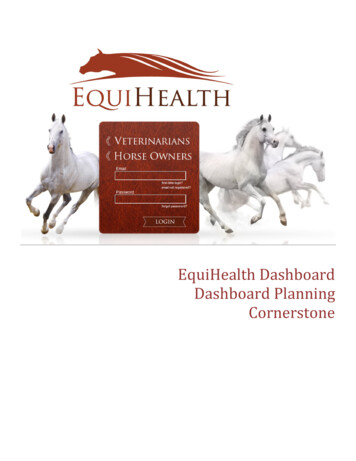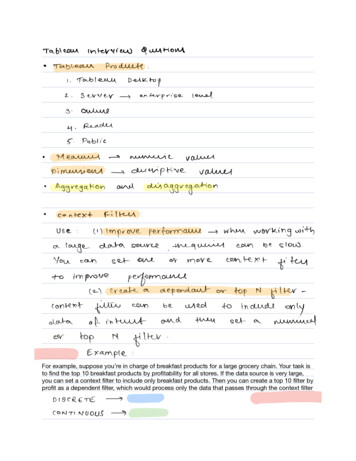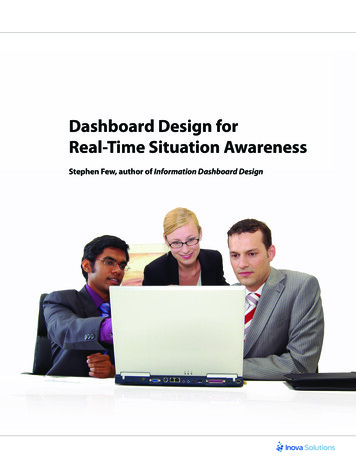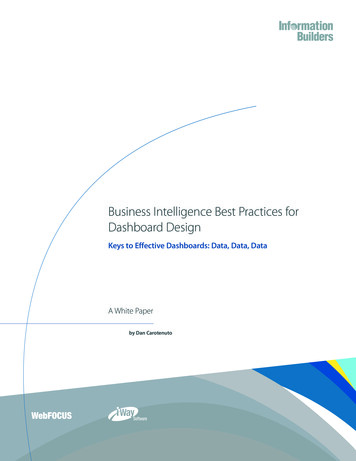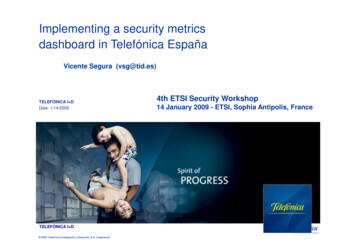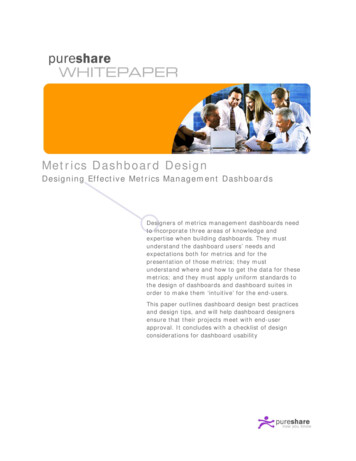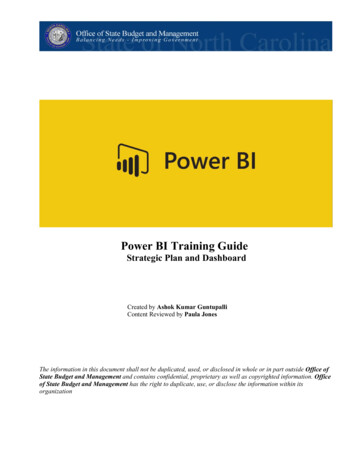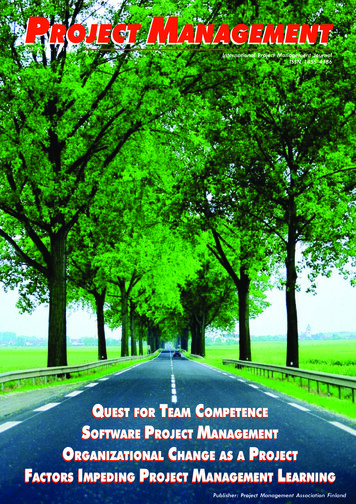
Transcription
PROJECT MANAGEMENTVol. 5, No. 1, 1999International Project Management JournalISSN 1455-4186QUEST FOR TEAM COMPETENCESOFTWARE PROJECT MANAGEMENTORGANIZATIONAL CHANGE AS A PROJECTFACTORS IMPEDING PROJECT MANAGEMENT LEARNINGPublisher: Project Management Association Finland
Project ManagementEditor-in-ChiefKarlos A.Artto, Helsinki University of TechnologyEditorial CoordinatorsMarko Korpi-Filppula, Iiro Salkari,Helsinki University of TechnologyProject Management Association FinlandPublications BoardMarko Arenius, Matti Haukka, Pia Arenius, KalleKähkönen, Aki Latvanne, Rauno PuskalaInquiriesAddress submissions and inquiries to:Karlos A.Artto, Editor-in-ChiefHelsinki University of TechnologyP.O.Box 9500, 02015 HUT, FinlandTelephone 358 9 451 4751, Facsimile 358 9 451 3665E-mail Karlos.Artto@hut.fiMore information about the journal can also be foundfrom the Project Management Association Finland website at: ipts should be submitted to the Editor-in-Chief inelectronic format by E-mail.Journal PolicyThe Project Management (ISSN 1455-4186) is publishedby the Project Management Association Finland (PMAF).The mission of Project Management (PM) is to promotetheory and practice in the field of project management andproject-oriented business. It is the policy of PMAF to publish one issue of PM yearly, which will be distributed free ofcharge. The main distribution channels comprise circulation arranged by national project management associationsto their members and distribution to the attendants of international events on project management in cooperationwith the arranging organization. The circulation of the journal is 5 000 copies. The aim of PM is to reach extensivelyinterest of project management experts and professionalsworldwide in any sector both in academic world and industry, and this way to extend communication between all different sectors of industries including the public sector, universities and research organizations.The PM seeks articles on any aspects of project management for publication. In addition to reviewed academic articles, it welcomes papers of more practical nature. Authorsare encouraged to submit the following types of originalmanuscript: summaries of research results; surveys on current practices; critical analysis and developments of concepts, theories, practices, methodologies, application or procedures; analyses of failure; and case studies. In the selection of manuscripts primary importance will be based on thenovelty value and the extend to which they advance theknowledge on project management. Those wishing to submit a paper or a case study should contact the editor-inchief. 1999. Project Management Association Finland. All rightsreserved. No part of this publication may be reproduced,stored in a retrieval system or transmitted in any form or byany means, electronic, mechanical, photocopying, recording or otherwise, without the prior written permission of thepublisher. All articles in PM are the views of the authorsand are not necessary those of PMAF.International Board ofAdvisors and ContributorsProfessor Luis Alarcon, Universidad Catolica de Chile,ChileProfessor Karlos Artto, Helsinki University of Technology, FinlandProfessor David Ashley, University of California, USAProfessor John Bale, Leeds Metropolitan University, UKProfessor Juan Cano, University of Zaragoza, SpainProfessor Franco Caron, Politecnico di Milano, ItalyProfessor Chris Chapman, University of Southampton,UKDoctor David Cleland, University of Pittsburgh, USADoctor Nashwan Dawood, University of Teesside, UKProfessor Mats Engwall, Royal Institute of Technology,SwedenProfessor Pernille Eskerod, Southern Denmark BusinessSchool, DenmarkProfessor Roger Flanagan, University of Reading, UKProfessor Carlos Formoso, Universidad Federal do RioGrande do Sul, BrazilDoctor J. Davidson Frame, University of Management &Technology, USAProfessor Roland Gareis, University of Economics andBusiness Administration, AustriaDoctor Ari-Pekka Hameri, CERN, SwitzerlandDoctor Keith Hampson, Queensland University ofTechnology, AustraliaDoctor Francis Hartman, University of Calgary, CanadaOtto Husby, Control Bridge AS, NorwaySimon Indola, Nokia Telecommunications Ltd., FinlandDoctor Kalle Kähkönen, VTT Building Technology,FinlandProfessor Daniel Leroy, Universite des Sciences etTechnologies de Lille, FranceMarko Luhtala, Nokia Mobile Phones Ltd., FinlandProfessor Rolf Lundin, Umeå Univesity, SwedenProfessor Jens Riis, Aalborg University, DenmarkProfessor Asbjorn Rolstadas, Norwegian University ofScience and Technology, NorwayJohn Russell-Hodge, Synergy International Limited, NewZealandProfessor Rodney Turner, Erasmus University Rotterdam,The NetherlandsVeikko Välilä, Industrial Insurance Co. Ltd., FinlandDoctor Stephen Ward, University of Southampton, UKKim Wikström, Åbo Akademi, University, FinlandDoctor Terry Williams, Strathclyde Business School, UK
Table of ContentsIndustry FocusedEditorial: Management Across the Organisation . 4Karlos A. Artto, Editor-in-Chief, Project Management, FinlandQuest for Team Competence . 10Francis Hartman, University of Calgary, CanadaGreg Skulmoski, University of Calgary, CanadaApplied Project Risk Management - Introducingthe Project Risk Management Loop of Control . 16Martin Elkjaer, PricewaterhouseCoopers, DenmarkFinn Felding, DenmarkMajor Risks in ERP Implementation . 26Jari Välimäki, Andersen Consulting, FinlandIPMA Research: PM-Competence of the Project-oriented Society . 28Roland Gareis, University of Economics and Business Administration, AustriaMartina Huemann, University of Economics and Business Administration, AustriaSoftware Project Management - Software by Committee . 30Matt Weisfeld, preEmptive Solutions, USAJohn Ciccozzi, United States Patent and Trademark Office, USADevelopment of a Project Simulation Game . 37Juan L. Cano, University of Zaragoza, SpainMaría J. Sáenz, University of Zaragoza, SpainResearchThe Assessment of Client Satisfaction in the Client-ProjectManager Relationship: An Expectations - Artefact Model . 42Mike Browne, University of Ulster, Northern IrelandSean O'Donnabhain, South AfricaOrganizational Change as a Project . 50Antti Salminen, Helsinki University of Technology, FinlandHarri Lanning, Helsinki University of Technology, FinlandFactors Impeding Project Management Learning . 56David L. Hawk, New Jersey Institute of Technology, USAKarlos Artto, Helsinki University of Technology, FinlandA Model for Supplying with Constrained Resources inProject Management under Random Disturbances . 68V.I. Voropajev, Russian Project Management Association, RussiaS.M. Ljubkin, Russian Project Management Association, RussiaD. Golenko-Ginzburg, Ben-Gurion University of the Negev, IsraelA. Gonik, Ben-Gurion University of the Negev, IsraelA Multi-Criteria Framework for Competitive Bidding . 74E. Cagno, Department of Mechanical Engineering, Politecnico di Milano, ItalyF. Caron, Department of Mechanical Engineering, Politecnico di Milano, ItalyP. Trucco, Department of Mechanical Engineering, Politecnico di Milano, ItalyA. Perego, Department of Mechanical Engineering, Università degli Studi di Brescia, ItalyBook ReviewsManaging Change in the Workplace - a 12-step program for success . 80Ralph L. Kliem and Irwin S. LudinProject Management: Planning and Control Techniques . 81Rory BurkeProject Management Association FinlandCorporate Members . 82Board 1999 . 83
KARLOS A. ARTTOEDITORIALManagement Across theOrganisationKarlos A. Artto, Editor-in-Chief, Project ManagementKeywords: Project Management, Project Business, Project Company, Projectoriented Company, Corporation Management, Organizational Model for ProjectManagementA major new challenge in projectized industry will be how to organize project-oriented companies that applyprojects as their major business vehicles. There is an increasing discussion of how projects relate to management of the company as a whole. The business aspect is emphasized. This editorial provides an organizationalview on project management that widely covers aspects of managing corporate business. The organizationalmodel is a new construct that puts project management in place and links it to related management activitiesin different organizational levels.Management by ProjectsA major new challenge in projectizedindustry will be how to organize projectoriented companies that apply projectsas their major business vehicles (Arttoet. al. 1998). While companies develop appropriate practices in project business, other organizations e.g. in the public sector develop either their projectlevel activities to boost their temporaryefforts, or whole organization level'management by projects' related issues.'Management by projects' as an organization's way to conduct its work andtasks in a project form is discussed ine.g. Turner (1993) and Gareis (1994,1996).Managing Business by ProjectsThere is an increasing discussion of howproject management relates to management of the company as a whole. Bothindustries and the academic community has realized that projects must belinked in a concrete way to their context i.e., to company's strategy and entire management application of the corporation. This trend is reflected by selection of topics in three importantevents around the beginning of the newmillennium: Nordnet'99 conference in1999 in Helsinki, Finland; IRNOP 2000Page 4conference in Sydney, Australia, andIPMA 2000 world congress in London,England. The whole 'Managing Business by Projects' theme selected forNordnet'99 conference relates to theorganizational business context (Artto,Kähkönen, Koskinen 1999). Similarorientation is reflected by the IRNOPconference interest areas: Globalproject collaboration; projectized companies; projects and strategic alliances;multi-project contexts; and working lifein a projectized society (IRNOP 2000).Further, the management across theorganization theme is also present in astream of the IPMA world congress heldin the beginning of the new millennium (IPMA 2000).IntroductionThe rationale for this editorial is to construct a concrete description of the business setting and project managementsetting in a project-oriented company.The specific discussion is directed toconcern project companies that sell anddeliver projects to their customers.However, the description can be considered as applicable to any project-oriented organization that conducts atleast some fraction of its operations inproject form. To provide a concrete ba-sis of which issues project managementmust concern in order to cover the business in a project company, the paperconstructs and introduces an organizational model for project management.The organizational model is a new construct with the purpose of positioningproject management and its links to related management activities in different organizational levels.Project business and managementof project companies is a new area withonly limited amount of reported studies. The purpose of this editorial is tointroduce a new organizational modelwith appropriate company managementissues at different organizational levels.The organizational model constructedenables understanding of different levels and dimensions of project-orientedmanagement applications in corporations. In order to enable an analysis thatcan be linked to existing organizational levels and responsibilities in companies, the paper uses the basic organizational hierarchy defined in Artto,Kähkönen, Pitkänen (1999), but originally associated with the performancepyramid discussion of Lynch and Cross(1991). The four-level pyramid linksstrategy and operations by translatingstrategic objectives from the top down- based on customer priorities - and
Pr o j e c t M a n a g e m e n t Vo l . 5 , N o . 1 , 1 9 9 LHQFHV([SHULHQFHV2UJDQL]DWLRQ 8QLWZLWK&RPSDQ\ 2UJDQL]DWLRQ 8QLW·V 3URFHVVHV /HDUQLQJ([SHULHQFHVThe project management literature introduces different application area specific project processes - or project lifecycles (see e.g. PMBOK 1996, Chapman, Ward 1997). The reported lifecycles are typically illustrated by projectprocesses that range from project initiation to project closeout. The perspective is often limited to effective management of project execution only.Many project companies follow thewell-known project execution contextby choosing development of projectexecution related procedures as primary targets for project-oriented businessdevelopment. Development of projectexecution and project management isoften justified as development of coreprocedures for manufacturing the concrete final deliverable that is finallyhanded over to the customer. However, for a project company that sells anddelivers projects to their customers, justmere development of project executionor project management does not suffice.The wider business-oriented perspective on project process development isdiscussed in the following. Further, anorganizational model of a project company is elaborated. Despite the specificdiscussion concerning project companies, the organizational model can beconsidered as applicable to any projectoriented organization that conducts atleast some fraction of its operations inproject form.tions at the project level. Concerningthis supportive and direction settingrole subjected to the unit's project portfolio, recording experiences fromproject processes and learning becomeimportant issues. Figure 1 illustrates ina simplified manner by arrows the dissemination of experiences from theproject process to the organization unitfor learning. However, the interrelationbetween the project process and theorganization unit is not a one-way streetonly: Although there are no arrows backto the project process from the organization unit drawn in Figure 1, the organization unit level processes must bedesigned to distribute experiences fromprevious or parallel projects to theproject process. Such distribution mightoccur in the form of company policiesor instructions, guidelines, or suggestions for appropriate for project relatedprocedures.In order to adopt a wide learningloop that enables dealing with issuesthat related to the actual purpose of theproject, the customer interface plays animportant role. Linking of the projectto customer's business is essential. Thecustomer interface is better understoodif the extended project process is adopted instead of using the traditional morenarrow project execution oriented definition for project life cycle. The extended project process includes theproject sales and marketing and aftersales services phases where the actualuse of the purchased project product isthe major issue. Accordingly, it is likelythat the most relevant experiences forAdopting wide business-oriented perspective on project process is essentialin any project company. The wide - orextended - perspective on project process can be illustrated by a process context covering pre-project phases related to project sales and marketing andpost-project phases related to after-salesservices (Artto et. al. 1998). Figure 1illustrates such extended project process that covers the project sales andmarketing and after sales services related phases relevant for the business context. Figure 1 also illustrates the projectmanagement process - as defined bycurrent project management standards(ISO 10006 1997, PMBOK 1996) positioned as a parallel managementactivity for the extended project process. The figure shows the interpretationof project management limiting itself toeffective management of project execution only, excluding management ofpre- or post-project phases associatedwith project sales and after-sales services.Figure 1 emphasizes the featureof linking the extended project processtightly to the management of the organization unit as the owner of the projectprocess. This feature is essential for anyproject company or other multi-projectenvironment where projects serve asvehicles for the organization's operations. The full or partial ownership ofthe project process in the organizationunit requires that the organization unitapplies management processes that support effective management and opera-([SHULHQFHVExisting Definitions of ProjectProcessesExtended Project Process([SHULHQFHVmeasures from the bottom up. At thetop of the pyramid, a vision for the business is articulated by senior management. To supplement the organizationby projects, the organizational hierarchy is further extended by project processes at the operative level.An organizational model is introduced that widely covers aspects ofmanaging corporate business. Byputting project management in place inthe organizational context, the papersimultaneously discusses the diversemore narrow but well-known interpretations of project management contentand related applications in companies.In order to supplement the organizational view by including projects to theorganizational overview, an extendedproject process is introduced first. Thiseditorial attempts to extend the perspective on project management fromthe conventional project managementarea in many LG&RQWUDFW2UGHU([HFXWLRQ6WDUW XSSODQQLQJ PDQXIDFW &RPPLV IWHUVLRQLQJ6DOHV&ORVHRXW *XDUDQW 3URMHFWFigure 1. Extended Project Process with Links to the Owner UnitPage 5
learning purposes are available in thesales and after-sales phases of theproject (or project product) where theproject's purpose is considered in termsof customer's business.Extended OrganizationalHierarchy with Issues forObjectives and MeasuresProject management relates to management of the company as a whole. Thepurpose of the following discussion is toenable an analysis that can easily belinked to existing organizational levelsand responsibilities in companies. Forthis purpose, we start our analysis - tobe continued in the following sections- by referring to performance pyramidillustrated by Lynch and Cross (1991).The performance pyramid is shown inFigure 2. The four-level pyramid linksstrategy and operations by translatingstrategic objectives from the top down- based on customer priorities - andmeasures from the bottom up. At thetop, a vision for the business is articulated by senior management. At the second level, objectives for each businessunit are defined in market and financial terms. The pyramid illustrates theprincipal relationships between lowerlevel objectives to marketing and financial goals of business units atthe second level: marketmeasures are supported by both customer satisfac-2EMHFWLYHVtion and flexibility, and financial objectives are supported by flexibility andproductivity. At the lowest base levelof the pyramid, objectives are converted into specific operational criteria ofquality, delivery, cycle time, and wastefor each department. An operationalcontrol system of business operationsystems must be based on tightly definedlinkage between their objectives andmeasurements at the local operationallevel. The elements of this linkage arefound in the four principal local operatin
The Project Management (ISSN 1455-4186) is published by the Project Management Association Finland (PMAF). The mission of Project Management (PM) is to promote theory and practice in the field of project management and project-oriented business. It is the policy of PMAF to pub-lish one issu
